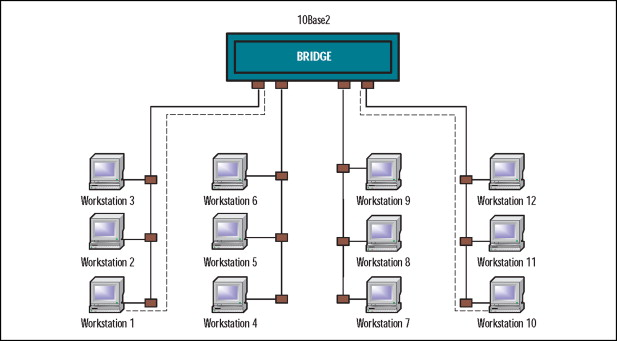Getting devices to work together and transfer data efficiently is key in this networking world that is hardly at peace with itself. Bridging is a basic networking concept and an answer to this mess. So, what exactly does bridging mean and why is it so important? Here, we are going to see some discussion on networking bridges: what form they take, how they are beneficial to network, and how they promote communication in a network.
Understanding Bridging
In computer networking, bridging refers to the practice of connecting multiple network segments by way of the data link layer (Layer 2) of the OSI model. Here, a network bridge functions as a device and filters or forwards traffic further based on MAC addresses. Thus the network bridge permits communication across network segments as though all devices were located on the same network.
Bridges operate without altering the actual data packets and these devices use techniques that allow for intelligent filtering and thus reduce network congestion. By analyzing MAC addresses, a bridge can decide whether to forward or filter frames, hence, supporting efficient data transmission.
Types of Network Bridges
There are different ways to implement bridging, depending on the requirements of the network. The basic types of network bridges include:
1. Transparent Bridge

The transparent bridge is invisible to network devices that function according to the addresses of MACs in forwarding-rate traffic. It emits and sends along packets of data that have been buffered by link level protocols. Transparent bridges are inherent to Ethernet in order to gain capacity and avoid collisions.
2. Source-Route Bridge
A token ring network traffic medium can be divided into a Source routing bridge. All hops between bridge and destination are defined by this one bridge based on incoming packet header information. ToolStripItem based on appropriate routing logic allows data to pass through a playing-field-like network efficiently.
3. Translational Bridge
A translational bridge is also used to connect two networks that use different protocols like Ethernet and Token Ring. It is mainly able to decipher data format between the two network types so that these may communicate with each other without any problem.
4. Wireless Bridge
A wireless bridge is a unit that allows for the establishment of wireless links between wired and wireless network segments. Basically, the bridge narrows down communication parameters that let devices at the wired LAN connect to those at the wireless LAN, which eventually expands network coverage and flexibility in networking environments.

Benefits of Bridging in Networking
Bridging offers several advantages in network management and performance, including:
- Improved Network Performance: Bridges will reduce congestion and improve overall network speed by intelligently filtering and forwarding traffic.
- Enhanced Network Scalability: By segmenting networks with bridges, it achieves the advantage of scalability without interfering with the communication between devices.
- Seamless Connectivity: Bridging naturally allows networks created on different network segments to interact without the need for additional configuration.
- Reduces Collision Domains: The bridge breaks down the large networks into smaller colliding domains, thereby reducing the number of data packet collisions within and thus enhancing the network stability.
Differences Between Bridges and Routers
Although both bridges and routers facilitate network communication, they serve different purposes:
| Feature | Bridge | Router |
|---|---|---|
| Layer of Operation | Data Link Layer (Layer 2) | Network Layer (Layer 3) |
| Function | Filters and forwards based on MAC addresses | Determines best path using IP addresses |
| Collision Domain | Reduces collision domains | Does not affect collision domains |
| Network Segmentation | Connects two or more segments | Connects different networks with unique IP subnets |
Conclusion
Bridging is a networking technique necessary to facilitate communication between different networking segments efficiently. Wired, wireless, or mixed networks can deploy ppeechlessses effectively enhance performance, minimize congestion, and boost network coverage.
For companies and individuals wanting to enhance their network infrastructure, a grasp of bridging techniques can definitely lead them to flexibility and increased efficiency. As an authorized retailer of Seagate Technologies, Jazz Cyber Shield entrusts the top-tire network and storage equipment to enhance the performance and reliability of your network.



